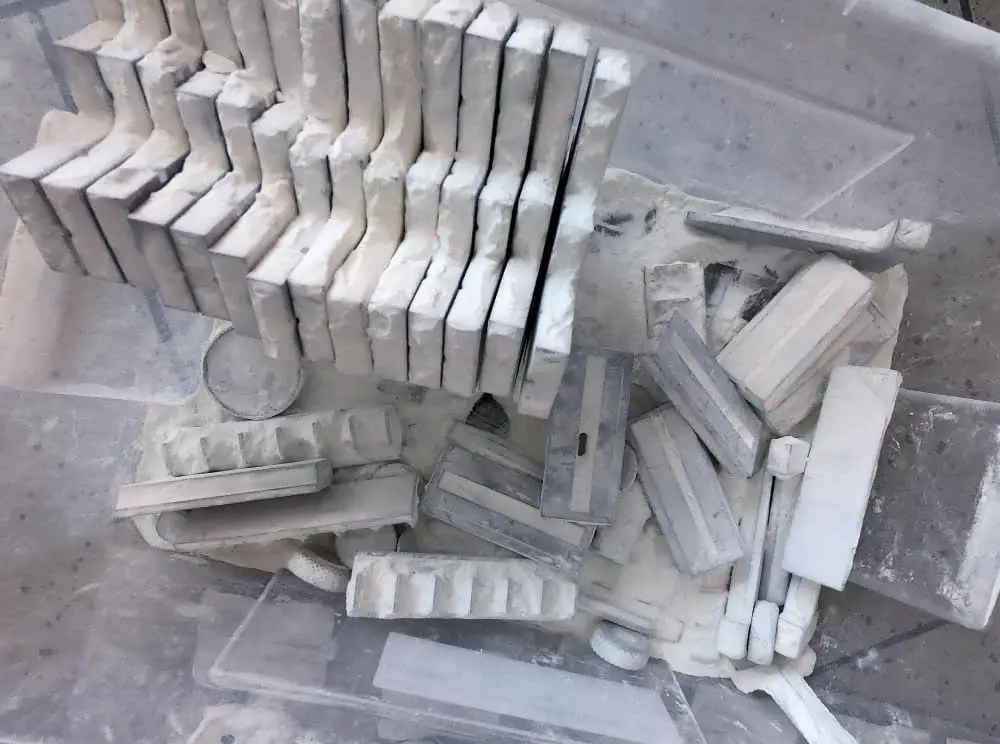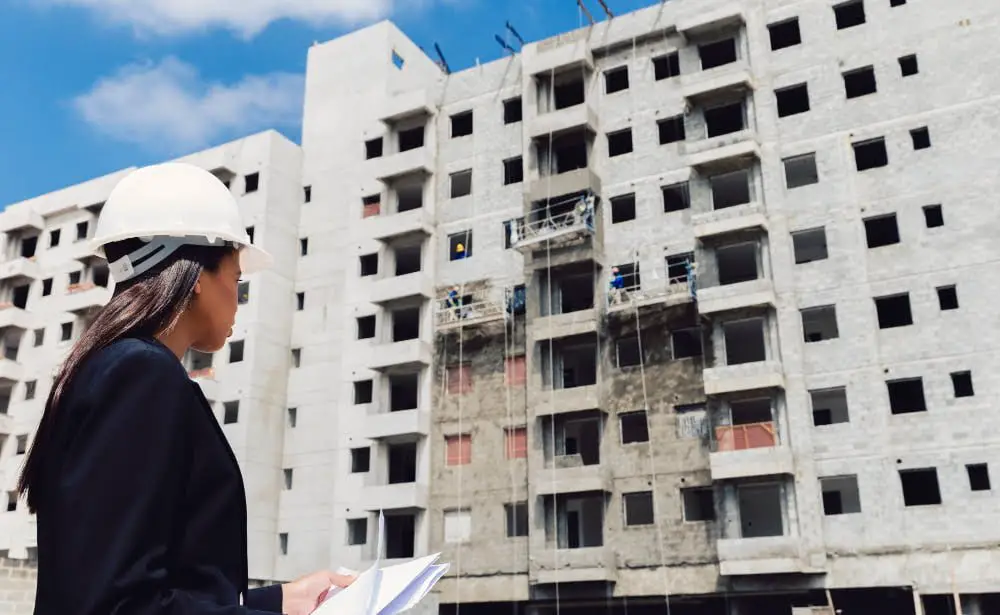Explore how fire-resistant thermoplastics are revolutionizing sustainable and safe construction practices.
One of the biggest risks in construction is fire. It can spread quickly and cause extensive damage to property and people alike.
That’s why it’s essential to use materials that are fire-resistant.
Recently, a new type of material has emerged in the construction industry: fire-resistant thermoplastics. These innovative materials not only provide excellent protection against fires but are also sustainable and eco-friendly.
In this blog post, we’ll explore how these new thermoplastics are revolutionizing construction by providing safer buildings while reducing their environmental impact. So buckle up as we take you on a journey through this exciting new era of sustainable and safe construction!
What You Will Learn
Fire-Resistant Thermoplastics: Overview

Fire-resistant thermoplastics are a new type of material that is gaining popularity in the construction industry. These materials have excellent fire resistance properties, making them ideal for use in buildings where safety is a top priority.
They can withstand high temperatures and prevent fires from spreading, which reduces the risk of damage to property and loss of life.
But what makes these thermoplastics even more exciting is their sustainability factor. Unlike traditional building materials like concrete or steel, they are eco-friendly and can be recycled at the end of their lifespan.
This means that not only do they provide superior protection against fires but also contribute to reducing our carbon footprint.
The use of fire-resistant thermoplastics marks an important milestone in sustainable construction practices as it offers both safety and environmental benefits simultaneously – something that was previously thought impossible!
With this innovative material now available on the market, we can look forward to safer buildings with reduced environmental impact – truly a new era for sustainable and safe construction!
Sustainable Construction Benefits

Apart from being fire-resistant, thermoplastics offer a range of benefits that make them an ideal choice for sustainable construction. For starters, they are lightweight and durable, which means they require less energy to transport and install.
This reduces the carbon footprint associated with transportation and lowers the overall cost of construction.
Moreover, thermoplastics are recyclable materials that can be reused in other projects once their lifespan is over. This makes them an eco-friendly option as it reduces waste generation while promoting circular economy practices.
As we continue our journey through this new era of sustainable construction using fire-resistant thermoplastics, it’s clear that these innovative materials have a lot to offer beyond just safety features. They provide numerous environmental benefits while also improving building performance by reducing maintenance costs over time.
Incorporating fire-resistant thermoplastics into building designs not only ensures safety but also promotes sustainability in the long run – making it a win-win situation for everyone involved!
Safety Advancements in Building Materials

Over the years, there have been significant advancements in building materials that have made construction safer and more sustainable. One of the most important areas of focus has been on fire-resistant materials.
In the past, many buildings were constructed using flammable materials such as wood or plastic. This made them vulnerable to fires that could quickly spread and cause extensive damage.
However, with new safety regulations and advancements in technology, builders now have access to a wide range of fire-resistant building materials.
One such material is thermoplastics – a type of polymer that can be molded into various shapes when heated but retains its shape once cooled down. These plastics are highly resistant to heat and flames due to their unique chemical composition.
The use of these innovative thermoplastics has revolutionized construction by providing an extra layer of protection against fires while also being eco-friendly. They are lightweight yet durable enough for use in high-rise buildings where safety is paramount.
Types of Fire-Resistant Thermoplastics

Fire-resistant thermoplastics are a new class of materials that have been developed to provide superior fire protection in construction. These materials are made from polymers that can withstand high temperatures without melting or releasing toxic fumes.
There are several types of fire-resistant thermoplastics available, each with its unique properties and applications. For example, polyphenylene oxide (PPO) is an excellent choice for electrical components due to its high dielectric strength and resistance to heat deformation.
Another type of fire-resistant thermoplastic is polycarbonate (PC), which has exceptional impact resistance and optical clarity. It’s commonly used in glazing applications such as windows, skylights, and safety shields.
Polyetherimide (PEI) is another popular option for construction because it offers excellent mechanical strength at elevated temperatures while maintaining good chemical resistance.
These innovative materials not only provide superior protection against fires but also offer many other benefits over traditional building materials like steel or concrete. They’re lightweight yet strong, easy to install, recyclable after use – making them more sustainable than their counterparts- all while providing the same level of safety required by modern building codes.
Fire-resistant thermoplastics represent a significant advancement in the field of sustainable construction practices by offering both environmental sustainability as well as increased safety measures against potential hazards like fires.
Applications in Modern Architecture

Fire-resistant thermoplastics have opened up a world of possibilities in modern architecture. These materials are not only safe but also versatile, making them ideal for use in a wide range of applications.
One such application is the construction of high-rise buildings. As we saw earlier, tall structures pose significant risks when it comes to fire safety.
However, with the use of fire-resistant thermoplastics, architects and builders can create safer buildings that meet stringent safety standards without compromising on design or aesthetics.
Another area where these materials are gaining popularity is in interior design and furnishings. Fire-resistant thermoplastics can be used to make furniture pieces that not only look great but also provide an added layer of protection against fires.
In addition to their practical uses, these innovative materials are also being used as decorative elements in modern architecture. They come in various colors and finishes that allow designers to create unique looks while ensuring maximum safety for occupants.
Fire-resistant thermoplastics offer endless possibilities for architects and builders looking to create sustainable yet safe structures without sacrificing style or functionality – truly ushering us into a new era of construction!
Testing and Certification Standards

To ensure that fire-resistant thermoplastics meet the necessary safety standards, they undergo rigorous testing and certification processes. These tests evaluate the material’s ability to withstand high temperatures and prevent flames from spreading.
One of the most widely recognized certification standards for fire-resistant materials is Underwriters Laboratories (UL). UL evaluates products based on their performance in various tests, including flame spread, smoke production, heat release rate, and more.
If a product meets UL’s requirements for a specific application or use case scenario – it receives its seal of approval.
Other organizations such as ASTM International also provide guidelines for testing fire resistance in construction materials. These certifications are essential because they give builders confidence that these new materials will perform as expected when exposed to extreme conditions like fires.
With these stringent testing procedures in place – architects can now design buildings with greater flexibility while still ensuring safety measures are met without compromising sustainability goals. Fire-resistant thermoplastics have opened up new possibilities within sustainable construction practices by providing an eco-friendly solution to traditional building methods’ inherent risks.
Environmental Impact Reduction

Apart from their fire-resistant properties, one of the most significant advantages of using thermoplastics in construction is their positive impact on the environment. Traditional building materials such as concrete and steel have a high carbon footprint due to their energy-intensive production processes.
In contrast, thermoplastics are made from recycled materials and can be easily recycled at the end of their lifespan.
This eco-friendly aspect makes them an ideal choice for sustainable construction projects that aim to reduce environmental impact while providing safe buildings. Since they are lightweight compared to traditional building materials, transportation costs during installation are reduced significantly.
As we continue into this new era of sustainable and safe construction with fire-resistant thermoplastics leading the way forward, it’s essential that we prioritize environmentally conscious practices in our industry.
By doing so, not only do we create safer structures but also contribute towards a healthier planet for future generations to come.
Related reading:





